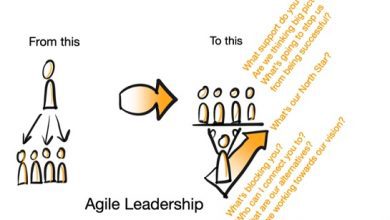Organizational management strategies and its Advantages
What is organizational management?
In this section of reading we will provide you the Organizational management strategies and its Advantages.
Organizational management is the technique of bringing people together to help them work toward a common, predefined goal. It offers the ability to make the most of an organization’s resources and gives employees a sense of direction.
Effective organizational management uses planning, organization, staffing, direction, and control, creating a calm and positive environment in the workplace. O
Effective resource management is the key to the success of any organization. Today we will talk precisely about organizational management . And it is that in a competitive market, organizations need to manage their most important assets in the most efficient way possible.
Employees who exercise their strengths on a daily basis are estimated to be more productive and more likely to be engaged.
Organizations must provide employees with a sense of security and unity, to have better coordination between different departments, and likewise to train employees to perform tasks within the stipulated deadlines.
Advantages of organizational management
Structures can be simple or complex, and each company has different needs. Regardless of the chosen structure, it is imperative that team members understand their roles and who is responsible for the hierarchy. If these elements are not clear, chaos ensues and productivity declines.
These are some of the reasons why it is important to do an organizational management:
1-Achieve group goals
Organizational management orders the factors of production, gathers and organizes resources, and integrates resources effectively to achieve objectives. Directs the group’s efforts toward the achievement of predetermined goals.
Defining the objectives of an organization reduces the loss of time, money and effort. Management turns disorganized resources into useful business. These resources are coordinated, directed and controlled in such a way that they allow organizations to work towards the achievement of common objectives.
2-Optimal use of resources
Organizations must use all their physical and human resources productively to achieve efficiency. Organizational management makes it possible to make the most of scarce resources by defining their most efficient use.
It takes into account the opinions of experts, which leads to the use of their skills and knowledge in the workplace.
3-Reduce costs
Project management achieves maximum results with minimum resources, thanks to proper planning. Management effectively plans the use of physical, human and financial resources to reduce costs.
4-Establish a strong organization
Establishing a solid organizational structure is one of the main goals of organizational management. To achieve this, an effective relationship of authority and responsibility is established, clearly identifying who is responsible to whom, who can give instructions to whom, who is superior and who is subordinate.
Organizational management covers the different positions with the most suitable employees for these functions, depending on their training and qualifications.
What are the most appropriate organizational management models and strategies?
When considering organizational models and strategies, one must take into account the sector in which it operates, the resources available and the dynamics through which information must flow within the organization.
The models and strategy define the workflow and how each employee functions in their particular groups within an organization. There is nothing worse for an organization than a major unit doing something that hurts another unit because the organizational communication was not clear.
An organization must carefully examine what it does and how it serves its customers. Each segment of the process must have access to relevant information to achieve the overall objectives.
1-Organizational management models
Consider these models that are seen in today’s market: Line, Functional, Line and Personal, Project Based, Matrix. Each of these structures, when presented correctly in an organization chart, show the chain of command in any organization. That is, they help define the responsibilities and management of the team’s workflow.
-
Online model or staff:
It is a very simple hierarchical structure that could have the CEO above the COO and the managing director.
The Director of Operations and the Managing Director are lateral equivalents, that is, they do not respond to each other but have the same level of influence on the structure of the company.
Under each one, area directors would be appointed, each with their own team. It is very clear that one person is at the top, with a flow of delegation and management down. This is usually a more rigid operating model.
-
Functional organizational model :
The functional organizational model is similar to the linear model, except that subordinates respond to two or more managers. This model is designed to help keep all relevant parties with the correct information by obtaining all information from subordinate employees.
It also avoids the over-specialization of any job position to keep the company agile in times of change.
-
Online and STAFF organizational model
This works the same as the online model, except that each managerial level has an added dynamic of its own staff. Thus, directors report to the CEO, but may do so through the CEO’s staff.
Directors can share staff who are not subordinate teams of the structure, but support the administrative needs of the directors.
-
Project-based organizational management model
Project-based models are much more dynamic. When a company is highly project-oriented, it often designates teams with similar job functions to equip each team with specialized resources.
Resources become immediately available rather than accessible outside of the team in a different department.
-
Matrix model
This model is the most dynamic operating model and it is also quite effective for companies that simultaneously carry out multiple product launches, marketing campaigns and developments.
Managers oversee the role of their department heads within a team, while keeping track of the progress made by all teams. This allows managers to combine resources that individual teams might not see.
Organizational management strategies
Organizational management strategy is a long-term dynamic plan that charts the way toward realizing the goals and vision of an organization. The organization’s goals may remain the same, but the strategy they adopt may change. Strategy begins with what the organization wants to achieve and then breaks down into various sets of activities.
Here are some more prominent organizational management strategies:
-
The three generic strategies Porte r
Porter’s three generic strategies get a lot of attention. Some say it very well sums up the basic strategic directions a business can take. Others argue that they are better suited for very large organizations. However, they are worth mentioning here, as they roughly summarize the main strategies available to a company. According to Porter, companies should select one, and only one, of the following strategic directions.
-
- Cost leadership: Being able to offer the best prices certainly makes an organization’s offering attractive to customers. However, the implications of cost leadership require careful consideration.The organization’s product or service must remain profitable. At the same time, the quality must be good enough to encourage consumers to buy what is offered.
-
- Differentiation : In this organizational management strategy, the organization does not necessarily seek to be the cheapest. Rather, your goal is to be the best. In most cases, this excludes cost leadership. There are many ways to achieve differentiation. It can be through innovation, quality, service levels, features, benefits, etc.
- Focus : Focus strategies identify and target niche markets. Niche markets are, by definition, smaller, but they can be hugely profitable for those who choose to serve them. They also allow companies to target very specific market segments.
-
Growth strategies
This is invariably expensive. Organizations may consider options such as increasing the sales of existing products and the size of the geographic area served or / and purchasing from a competitor.
-
Rationalization
Sometimes organizations that have followed a growth strategy find that they have become too complex. Sometimes it is even possible to decrease the volume of business and, nevertheless, obtain more profits, both in absolute terms and as a percentage of return on investment.
In this organizational management strategy, organizations can think about discontinuing products, laying off staff, reducing their number of outlets, and generally streamlining to make the business more profitable and more focused on what it does best. Ironically, this can mean financial growth as the business becomes more efficient.
-
Strategies by business function
All the functions of the organization must contribute to the objectives of the organization. The organization may have several functional strategies that contribute to a defined result. There may be subcategories for each of the functional strategies under this strategy.
Once the organization has determined its model and strategy, from an operational point of view it must decide what it must do to achieve its objectives.
Any organizational management model or strategy that is put into practice must be fluid, so the organization will always be on the move, while the market is always changing, and is capable of adapting to remain efficient and profitable.
Organizational strategy is a management tool that requires reflection, debate and analysis. It forces us to think outside of the box to define and clarify the mission of the company by observing the omnipresent forces of the external and internal environment. The strategic issues, transformed into clear and measurable organizational objectives, will serve as a starting point to align the strategy within the organization based on the culture, organizational values and success factors specific to each organization.




